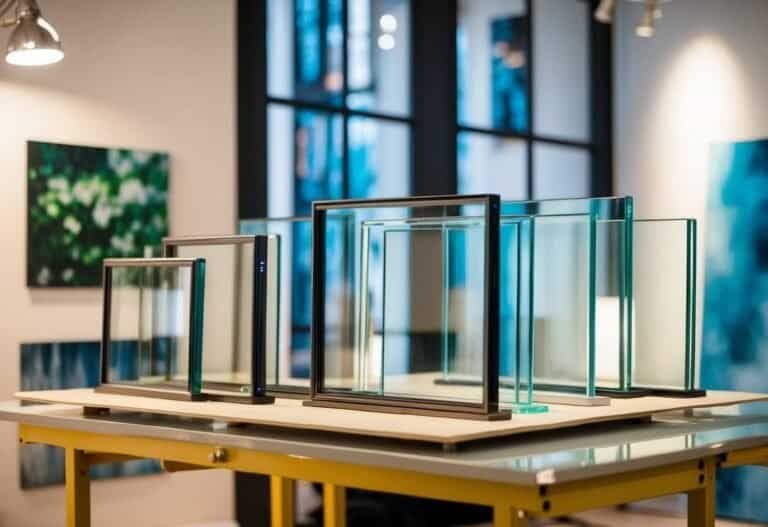Protecting Delicate Artworks: Essential Preservation Techniques
Watercolors, pastels, and other delicate artworks require special care to maintain their beauty and integrity. The sensitivity of these art mediums makes them vulnerable to damage from light, humidity, and handling.
Understanding the right techniques for preserving these artworks is crucial to extending their life and maintaining their original charm.
Simple changes in their environment and handling can significantly impact their longevity.
When storing delicate artworks, it is important to keep them in a stable environment.
Equipping storage areas with proper temperature and humidity controls helps in safeguarding against degradation.
Handling and displaying these pieces with the right materials, such as acid-free paper and UV-protective glass, can further prevent damage.
Key Takeaways
- Learn how to preserve delicate art.
- Store artwork in controlled environments.
- Handle and display art carefully.
Understanding the Sensitivity of Different Mediums

Different types of paintings have unique needs due to their sensitivity to light, humidity, and temperature. Environmental factors can affect the stability and appearance of watercolors, pastels, and oils.
Proper care helps maintain their original beauty.
Distinct Considerations for Watercolor Paintings
Watercolor paintings are prone to fading due to light exposure. The pigments in watercolors are often less stable, making them sensitive to UV rays.
To preserve them, you should display watercolor paintings away from direct sunlight.
Using UV-filtering glass when framing can provide protection.
It’s also important to maintain a stable environment, avoiding fluctuations in humidity and temperature that can cause the paper to warp or the colors to shift.
Best Practices for Pastel Artwork
Pastel artworks are fragile due to their chalk-like consistency. The surface can easily smudge, even with a light touch.
To safeguard pastels, it’s essential to use fixative sprays to set the pigment in place.
They should be framed under glass to prevent direct contact. Avoid hanging pastels in areas with high traffic or vibrations that might disturb the fine particles.
Stable humidity is crucial, as moisture can affect the delicate surface.
Protective Measures for Oil and Acrylic Paintings
Oil and acrylic paintings are generally more durable, yet they have their own vulnerabilities.
Oil paintings can crack with changes in humidity and temperature. To protect them, you should keep oil paintings in an even climate, ideally between 50-70% humidity.
Acrylics, though resistant, can suffer from dust accumulation, so regular gentle cleaning is advised.
Direct sunlight should be minimized to prevent color fading. Framing with UV-resistant glass or acrylic is a helpful option to ensure longevity.
Fundamentals of Art Preservation

Preserving delicate artworks requires careful attention to the environment and materials used. It’s important to manage factors like temperature, humidity, and light exposure to ensure the longevity of art pieces.
Importance of Climate-Controlled Environments
Climate-controlled environments are essential for preserving delicate artworks like watercolors and pastels.
Temperature fluctuations can cause materials to expand and contract, leading to damage.
Consistent temperature and humidity levels help prevent cracking and fading.
For best results, maintain a temperature of around 70°F (21°C) and relative humidity between 40% and 50%.
Using humidifiers or dehumidifiers can assist in keeping these levels stable. This control creates a safe space for storing sensitive artworks.
Regulating the climate helps protect artworks from many types of deterioration. It’s a key part of any preservation strategy.
Role of Acid-Free Materials in Preservation
Acid-free materials play a significant role in art preservation. They prevent discoloration and degradation that acidic materials can cause.
Artists and conservators often use acid-free paper and archival paper to store works safely.
It’s crucial to choose acid-free mounts, mats, and backing boards. Doing so helps protect the artwork from harmful chemicals that can seep over time.
This kind of material stability ensures long-term integrity.
By using acid-free materials, artworks maintain their original appearance and value. This simple choice offers a reliable way to safeguard delicate pieces.
Understanding Light Exposure and UV Protection
Light exposure can seriously harm artworks, especially those sensitive to fading like watercolors.
Direct sunlight and even indoor lighting can cause colors to fade.
To reduce this risk, control light exposure and provide adequate UV protection.
Use UV filtering glass or acrylic for framing to minimize UV damage.
Position artworks away from direct sunlight when displaying them. Curtains or shades can also help manage light levels in the room.
Incorporating these practices will help maintain the artwork’s vibrant colors and structural integrity over the years. Keeping light exposure in check is critical for the preservation of valuable artworks.
Storage Solutions for Delicate Artworks

Storing delicate artworks correctly is crucial for their longevity. Proper practices include flat storage for smaller pieces, rolled storage for large art, and protective materials like archival boxes and glassine envelopes.
Advantages of Flat Storage for Stability
Flat storage is ideal for smaller pieces like watercolors and pastels.
Flat storage provides support and minimizes warping. It also protects delicate surfaces from dust and light exposure.
For best results, artworks should be placed in acid-free folders and stored in a dry, dark space. This setup prevents fading and moisture damage.
Artworks stored flat should not be too tightly packed. This helps prevent pressure damage.
It’s also important to keep the pieces from touching each other.
Using interlayers of glassine paper can protect the surfaces while allowing easy access when needed.
Utilizing Rolled Storage for Large Pieces
Large artworks can benefit from rolled storage.
This method saves space and protects oversized pieces from creasing.
When rolling, artworks should be face-out to reduce surface tension. Using wide-diameter tubes prevents tight curls.
Placing a layer of acid-free paper between rolls adds extra protection.
It’s essential to store these tubes in a cool, dark, and dry environment. This prevents changes in humidity and temperature that can cause damage.
Rolled storage is especially useful when space is at a premium.
Protecting Art with Archival Boxes and Glassine Envelopes
Archival boxes are another excellent choice for protecting delicate artworks.
These boxes shield art from dust, light, and physical damage.
It’s important to use acid-free boxes to prevent any chemical reactions that could degrade the art.
Glassine envelopes add an extra layer of protection for individual pieces.
They keep artworks free from smudges or pollutants.
Artworks stored in these envelopes should be kept vertically, if possible, to reduce pressure on the art. This method is suitable for items that need frequent access without compromising protection.
Handling and Displaying Artwork Safely

When dealing with fragile artworks, proper handling and careful display are essential. Ensuring a clean environment and using suitable protective measures help prevent damage over time.
Guidelines for Handling Watercolor Paintings
Watercolor paintings are sensitive to touch and need careful handling.
Always hold the edges and avoid touching the surface to prevent fingerprints. Wearing clean gloves can help reduce the risk of transferring oils or dirt.
Use acid-free materials for mounting and framing to avoid contaminants.
A clean workspace minimizes the chance of accidently damaging the painting during handling.
Staff should be trained in art handling to ensure consistency.
Regular inspections for any signs of wear or damage are also beneficial. This helps in maintaining the preservation efforts and identifying issues early.
Strategies for Displaying Paintings to Minimize Damage
Displaying paintings in a controlled environment is crucial.
Use UV-filtering glass or acrylic to protect from harmful light exposure. These materials help in reducing fading and damage from direct sunlight.
Maintain stable temperature and humidity levels to prevent warping or mold.
Ideal storage conditions typically include keeping humidity between 40% and 50%.
It’s also important to anchor frames securely, ensuring they are not exposed to vibrations or impacts.
Artworks should be displayed away from heat sources and areas of direct exposure to pollutants.
Using archival varnish for additional protection can also be considered.
Proper display not only enhances the artwork’s visual impact but also ensures its longevity.
Maintenance and Regular Inspection of Artworks

Routine care is necessary to keep artworks in good condition. Careful scheduling of checks and quick repairs of problems are crucial to art conservation.
Scheduling Regular Inspections
Regular inspections help catch problems early.
Paintings, drawings, and sculptures can suffer from dust, moisture, and light exposure.
Art specialists recommend checking artworks at least twice a year.
This involves looking for signs of damage such as fading colors, mold, or cracks.
Create a checklist for inspections. Include things like checking for pest damage, unusual odors, or changes in texture.
Museums and galleries often use detailed logs to track the condition of each piece. This helps in comparing past and present conditions.
Proper lighting is also checked during these inspections.
Light can affect artworks over time, so examining lighting conditions is essential. Adjusting light levels can slow down or prevent deterioration.
Prompt Addressal of Detected Issues
When a problem is detected, addressing it quickly can stop further damage. For instance, fixing minor water damage before it spreads is crucial.
Art experts can provide treatments like cleaning or restoring color.
Employing professional conservators is important for tackling complex issues. They have the skills to handle delicate restorations.
Using incorrect methods can cause more harm than good.
Regular cleaning of artworks should be done with care. Use soft brushes or cloths to remove dust.
Avoid harsh chemicals which could damage delicate surfaces or cause discoloration.
Following guidelines specific to each type of artwork helps in maintaining them safely.








